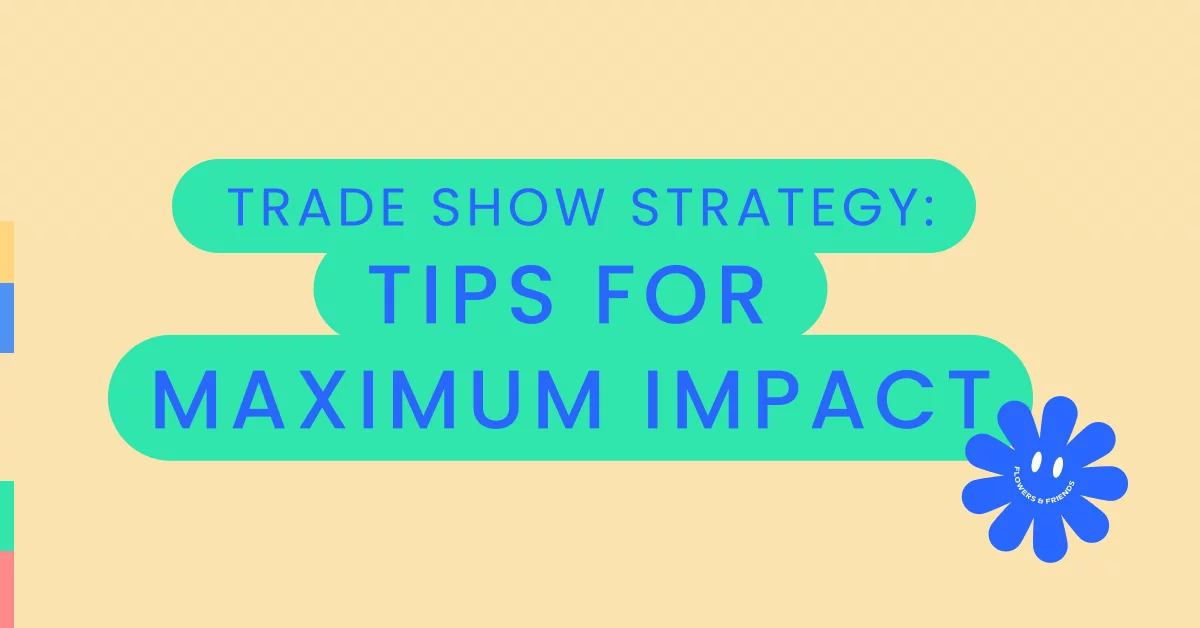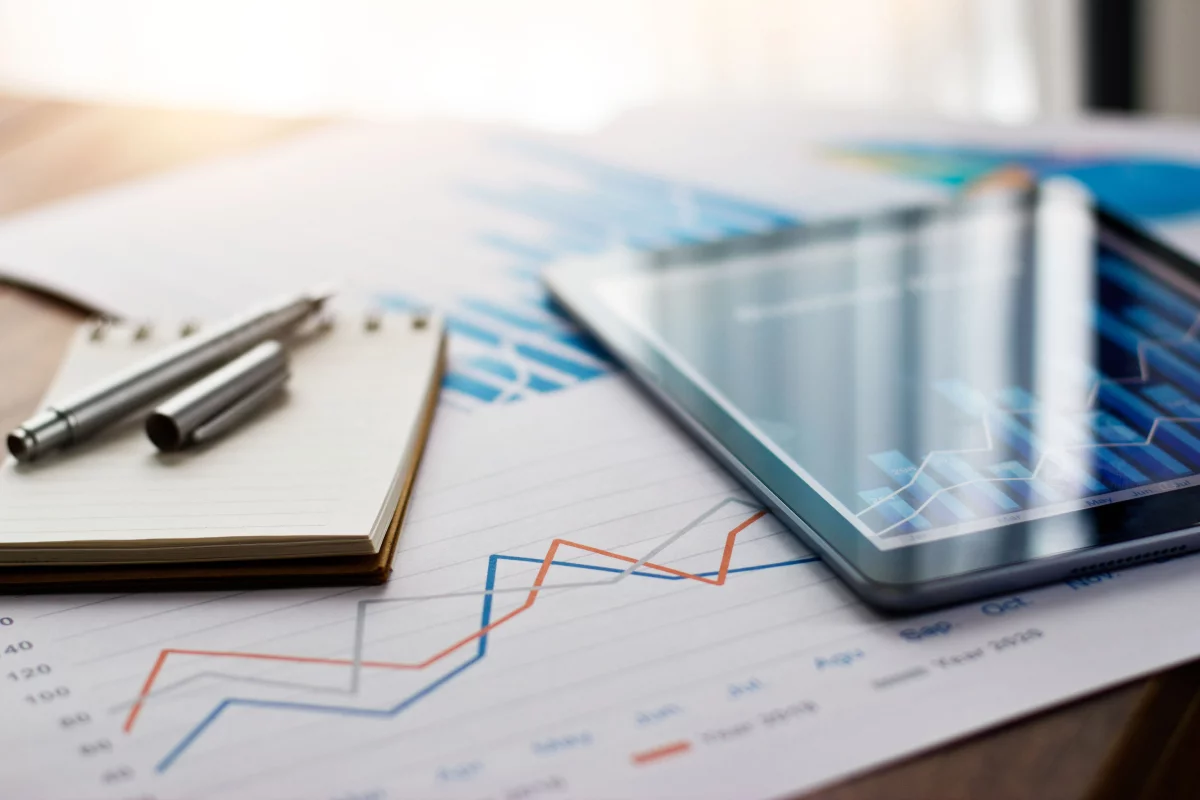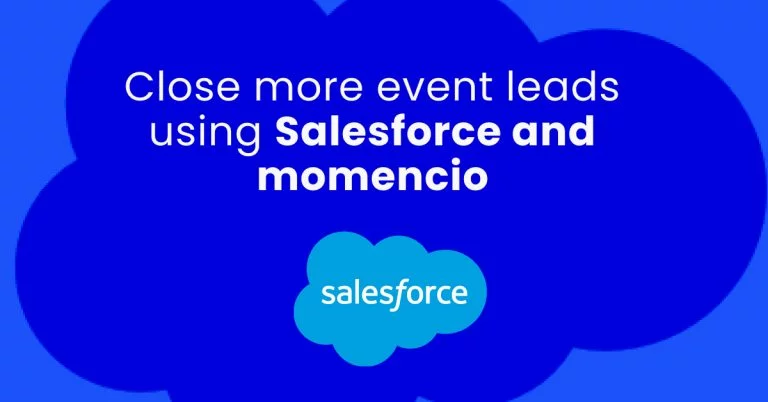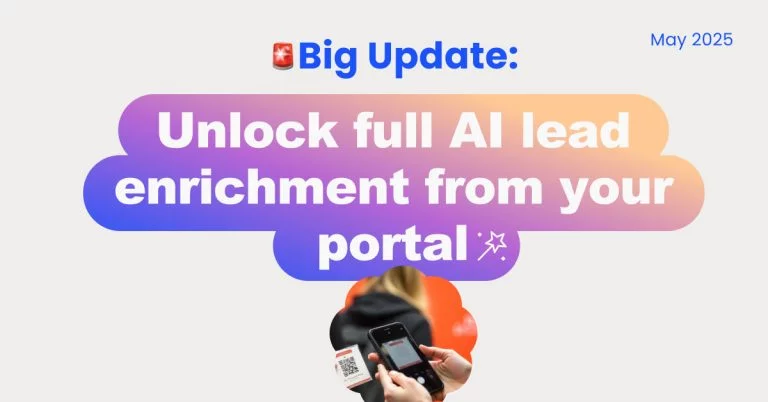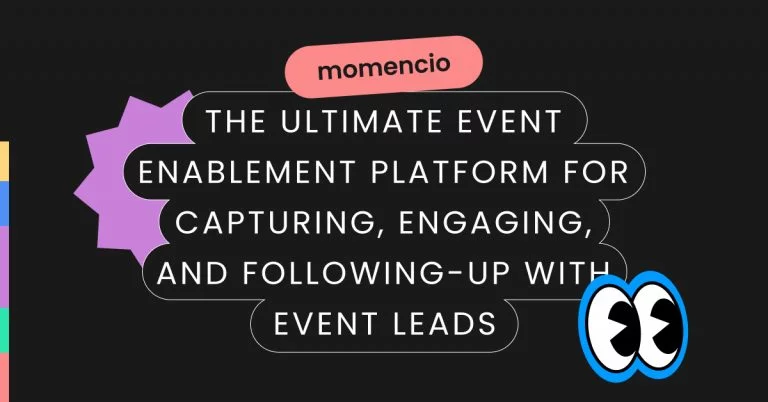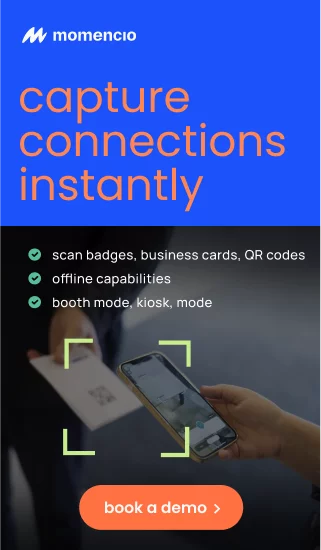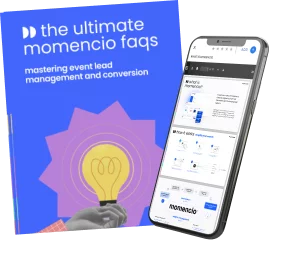Trade show Strategy: 10 Tips for Maximum Impact
Tradeshows are a pivotal platform for businesses to showcase their products and network with industry peers, but standing out in a crowded expo requires a strategic approach. According to the Center for Exhibition Industry Research, 81% of tradeshow attendees have buying authority, which highlights the importance of an effective tradeshow strategy to attract and engage potential clients. This article will delve into essential strategies to amplify your presence and ensure a high return on investment (ROI) from these events. From designing engaging booths that draw attendees into implementing advanced lead capture and follow-up techniques, we’ll cover how to turn your tradeshow efforts into measurable success. This guide is tailored for marketing managers, event planners, and business development professionals eager to optimize their tradeshow performance. Let’s explore the key tactics that can make your next tradeshow a substantial success.
Understanding Your Audience
Tailoring Your Trade Show Strategy for Targeted Impact
At the heart of any successful tradeshow strategy is a deep understanding of your audience. Knowing who attends the event, what they are looking for, and how they engage with exhibitors shapes the foundation of your approach. Here, we dive into the steps and considerations necessary to tailor your tradeshow presentation for maximum impact, ensuring your booth and messages resonate effectively with your target demographic.
Identifying Target Demographics
Research the Event Demographics: Begin by researching the typical attendee profile for the tradeshow. Event organizers often provide demographic data, including job titles, industries, seniority levels, and main areas of interest. This information helps craft messages that speak directly to the attendees’ needs and aspirations.
Analyze Past Success: Review your previous tradeshow performances to identify which demographics showed the most interest in your offerings. Look at the leads collected and note any patterns in demographics or behaviors. This retrospective analysis is invaluable in refining your focus for future events.
Survey Potential Attendees: Conduct pre-event surveys with registered attendees to gain insights into their current challenges and what solutions they are actively seeking. This direct feedback can guide your event strategy, from the design of your booth to the demonstrations or presentations you plan to offer.
Tailoring Messages for Maximum Engagement
Segment Your Messages: Divide your audience into segments based on their industries, needs, or pain points. Create tailored messages for each segment, addressing specific challenges or highlighting particular benefits that resonate with that group.
Develop Persona-Based Content: Craft content that appeals to different personas visiting your booth. For instance, technical details and data-driven results might attract CTOs or technical specialists, while business benefits and ROI calculations appeal more to CEOs or decision-makers.
Interactive Content for Engagement: Develop interactive content that involves the audience and invites them to participate. This could be a live demo of your product, a digital quiz related to their industry challenges, or a virtual reality setup that lets them experience the benefits of your offering firsthand.
Cultural Considerations: If the tradeshow attracts an international audience, be mindful of cultural nuances. This might affect everything from the design and copy of your marketing materials to the way your staff communicates with booth visitors.
Using Analytics to Refine Audience Understanding
Leverage Real-Time Data: Utilize event technologies that provide real-time feedback on booth engagement. Tools like heat maps, visitor counters, and interaction trackers can help you understand what works and what doesn’t, allowing you to adjust your approach during the event itself.
Post-Event Analysis: After the event, analyze the data collected through lead forms, surveys, and digital interactions to refine your understanding of the audience further. This ongoing process not only improves future trade show strategies but also enhances broader marketing efforts.
By thoroughly understanding your audience and tailoring your tradeshow strategy accordingly, you position your business to capture attention in a crowded venue, engage meaningfully with prospects, and maximize the conversion of leads into valuable business relationships.
Designing an Engaging Booth
Creating a Visually Appealing and Functional Tradeshow Space
The design of your tradeshow booth plays a crucial role in attracting and retaining the attention of event attendees. An engaging booth is not just visually appealing but also strategically set up to facilitate interactions and conversions. Here’s how you can create a booth that stands out and effectively draws in your target audience.
Elements of a Visually Appealing Setup
Use of Brand Colors and Imagery: Ensure your booth reflects your brand’s identity through consistent use of logos, colors, and imagery. This visual consistency helps make your booth recognizable and memorable to attendees who are familiar with your brand or may seek it out post-event.
Innovative Design Elements: Incorporate unique design elements that can catch an attendee’s eye from across the room. Think about using dynamic lighting, multimedia displays, or even augmented reality experiences that can showcase your products or services in action.
Functional Layout: Design your booth with functionality in mind. Ensure there is a clear path for attendees to follow that will lead them through various interactive points or information displays. Consider the flow of traffic and how attendees will move through your space to maximize engagement without creating congested areas.
Interactive Features to Attract More Visitors
Demonstration Stations: Set up live demonstration stations where attendees can see your products or services in action. Live demos not only draw attention but also provide a hands-on experience that can make a more lasting impression.
Interactive Screens and Kiosks: Use touch screens and interactive kiosks to allow attendees to explore your offerings at their own pace. These stations can include product information, testimonials, or interactive content that educates users about your company and solutions.
Engagement Activities: Consider incorporating fun activities that can break the ice and encourage interaction. This could include a digital game related to your industry, a photo booth with branded props, or a contest with attractive prizes.
Maximizing Space and Engagement Through Design
Effective Signage: Utilize clear and impactful signage that can be seen from different angles and distances across the tradeshow floor. Your main messages should be easy to read and designed to attract attention quickly.
Comfortable Seating Areas: Create a welcoming space within your booth where visitors can sit and discuss their needs with your team. A comfortable seating area can make your booth feel more inviting and encourage more extended interactions, which can lead to more substantial conversations and lead captures.
Refreshment Options: Offering refreshments can be a great way to attract attendees to your booth and give them a reason to stay longer. This can range from simple water and snacks to branded refreshments that tie into your product offerings or event theme.
By designing a tradeshow booth that combines visual appeal with functional design and interactive elements, you create an environment that not only draws attention but also fosters meaningful engagement with attendees.
Read more about Designing a Trade Show Booth: Strategies That Engage and Convert
Effective Lead Capture Strategies
Harnessing Technology and Best Practices to Maximize Lead Collection
In the bustling environment of a tradeshow, capturing leads effectively is critical. Your booth may attract many visitors, but without a strategic approach to gathering their information, potential opportunities can slip through the cracks. Here’s how you can implement robust lead capture strategies that convert booth traffic into actionable leads.
Technologies for Efficient Lead Collection
Digital Badge Scanning: Utilize badge scanning technology to quickly and accurately collect attendee data. This method is not only efficient but also allows for the immediate capture of essential contact information and other predefined data provided by the event organizers.
Mobile Apps for Lead Capture: Implement mobile apps specifically designed for lead capture at tradeshows. These apps can be used to enter details manually or scan business cards, making it easy for booth staff to manage information even during busy periods.
CRM Integration: Ensure that whatever lead capture tool you use integrates seamlessly with your existing CRM system. This integration allows for real-time data entry and updates, which means your sales team can begin follow-up processes immediately after the event, enhancing the chances of conversion.
Immediate Follow-Up Techniques to Convert Leads
Automated Email Responses: Set up automated email responses that trigger as soon as a lead is captured. These emails should thank the visitor for stopping by your booth and provide additional information or resources related to their interests as identified during their visit.
Personalized Follow-Ups: Assign leads to specific team members based on the interaction or the visitor’s needs. Personalized follow-up emails or calls shortly after the event can make a significant impact. Tailor these communications to reflect the conversation that took place at the booth, reinforcing the personal connection.
Lead Scoring and Prioritization: Implement a lead scoring system to prioritize follow-ups based on the potential business impact. This approach ensures that your sales team focuses their efforts on the most promising leads first, optimizing resource allocation and maximizing ROI.
Enhancing Lead Capture with Engagement and Interaction
Engagement Tools: Use interactive tools such as tablets at your booth where visitors can enter their details to receive newsletters, whitepapers, or other educational materials. Make this interaction a value exchange—offer something of worth for their contact information.
Social Media Integration: Encourage visitors to engage with your brand on social media as part of the lead capture process. This could involve them following your page in exchange for a chance to win a prize or sharing a post using a custom hashtag to receive a discount. Such actions help extend the relationship beyond the tradeshow.
Qualitative Data Collection: Beyond just collecting contact details, use this opportunity to gather qualitative data. Ask open-ended questions about the visitor’s current challenges or interests. This information can be precious for tailoring future marketing efforts and for developing personalized follow-up strategies.
By employing these effective lead capture strategies, your tradeshow presence becomes more than just an exhibition—it transforms into a dynamic opportunity for gathering high-quality leads and setting the stage for meaningful post-event engagements.
Read more in our article 10 Essential Tips: Effective Tradeshow Lead Capture Strategies

Maximizing Attendee Engagement
Strategies to Keep Visitors Interested and Actively Involved
Engaging attendees effectively is vital for a successful tradeshow presence. Once visitors are drawn to your booth by its design and interactive elements, the next step is to keep them interested and engaged with your brand. Here’s how to maximize attendee engagement through thoughtful activities and strategic interactions.
In-Booth Activities That Keep Visitors Interested
Live Demonstrations and Workshops: Organize live demonstrations of your products or services to show their value in real-time. Workshops can also be practical, mainly if they teach something relevant and valuable to the attendees using your products or services. These activities not only keep the audience engaged but also help them visualize using your offerings in their business contexts.
Interactive Challenges and Contests: Create interactive challenges or contests that can be participated in right at the booth. These could involve trivia related to your industry, a quick game that highlights product features, or a creative task that involves your product. Offer small but meaningful prizes that encourage participation and leave a lasting impression.
Q&A Sessions with Experts: Schedule Q&A sessions with product experts or thought leaders from your company. This gives attendees the chance to ask specific questions and receive immediate feedback, adding a layer of credibility and interaction to your booth.
Using Gamification to Enhance Interaction
Reward Engagement: Implement a gamification strategy where attendees earn points for participating in activities at your booth. Points could be exchanged for rewards like discounts, free trials, or branded swag. This not only makes the interaction fun but also incentivizes deeper engagement.
Digital Leaderboards: Use digital leaderboards to display scores from games or contests happening at your booth. This can create a sense of competition among attendees, driving them to engage more with your activities.
Augmented Reality (AR) Games: Incorporate AR games that visitors can play using their smartphones or provided devices. These games can be themed around your products or the industry, offering a fun and futuristic way to engage visitors while educating them about your brand.
Personalized Experiences for Every Visitor
Tailored Recommendations: Use the information gathered during registration or initial interactions to provide personalized product recommendations or customized information packets. This level of personal attention can significantly boost the visitor’s perception of your brand.
Technology-Driven Personalization: Utilize technology such as RFID or NFC to deliver personalized content on screens as visitors approach different areas of your booth. For example, when a visitor nears a product display, detailed information about how it fits their specific needs could automatically appear.
Emotional Connections Through Storytelling: Engage visitors by sharing stories of how your products or services have solved real-world problems. This can be done through multimedia presentations, testimonial videos, or live narrations by team members. Storytelling is a powerful tool to connect on an emotional level, making your brand more memorable.
By implementing these strategies to maximize attendee engagement, your trade show booth becomes more than just a promotional space—it transforms into an interactive hub that educates, entertains, and connects with visitors, leaving a lasting impression and significantly increasing the potential for lead conversion.
Read our comprehensive Booth Engagement Guide.
Utilizing Advanced Event Technologies
Leveraging Cutting-Edge Tools to Enhance Tradeshow Impact
Incorporating advanced technologies into your tradeshow strategy not only sets you apart from competitors but also significantly enhances the attendee experience. By leveraging the latest event technologies, you can provide more immersive and interactive experiences that capture and retain attendees’ interest. Here’s how you can use these tools effectively.
Incorporating AR/VR for Immersive Experiences
Augmented Reality (AR) Integrations: Implement AR to bring static elements of your booth to life. For example, you can use AR to overlay digital information on physical products, allowing attendees to see how your products work or how they can be customized without needing a live demo for each variant.
Virtual Reality (VR) Demonstrations: Utilize VR to transport attendees to different settings where they can experience your products or services in simulated real-world environments. This is particularly effective for products that are too large, expensive, or complex to be fully displayed at the show.
Interactive Product Tours: Create interactive 3D models of your products that attendees can explore using AR or VR. This allows them to interact with your products from every angle, deepening their understanding and interest.
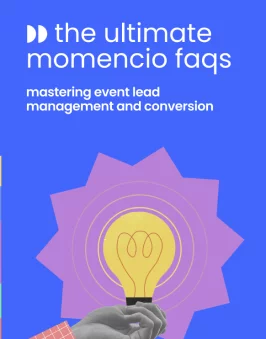
Real-time Analytics Tools for Attendee Behavior
Heat Maps: Use heat maps to track where attendees spend the most time in your booth. This data helps you identify which parts of your display attract the most interest and where you need to increase engagement efforts.
Facial Recognition Software: Implement facial recognition to gauge attendees’ reactions to different displays or demonstrations. This technology can provide real-time feedback on what captures attention and what may be overlooked, allowing for quick adjustments.
RFID Tracking: Equip badges with RFID tags to track attendee movements and interactions within your booth. This data can help you understand traffic patterns and engagement levels with different elements, which can be crucial for optimizing booth layout and staffing.
Utilizing Mobile Apps and Digital Interfaces
Custom Event Apps: Develop a custom mobile app for your tradeshow presence that attendees can download. Use the app to push notifications about scheduled demos, offer exclusive content, and collect feedback directly from users.
Interactive Kiosks: Set up interactive kiosks where attendees can enter information, request follow-ups, or explore your products and services through touch screens. These kiosks can also be used for instant lead collection and real-time content delivery based on user interest.
Digital Brochures and Menus: Replace traditional paper brochures and product sheets with digital versions that can be accessed via QR codes or digital download points throughout your booth. This not only saves costs and reduces waste but also allows for easy updating and customization of information.
By integrating these advanced technologies into your tradeshow booth, you create a dynamic and memorable experience that not only engages attendees but also provides valuable insights into their behaviors and preferences. This strategic use of technology not only improves the immediate tradeshow experience but also contributes to a more prosperous, data-driven approach to event marketing.
Post-Event Analysis and ROI Optimization
Evaluating Performance and Enhancing Future Tradeshow Success
After the excitement of the tradeshow has subsided, the real work of understanding and improving upon your performance begins. Post-event analysis is crucial for measuring the effectiveness of your tradeshow strategy and optimizing ROI. This process involves examining both qualitative and quantitative data to make informed decisions for future events. Here’s a structured approach to conducting a thorough post-event analysis.
Tools and Methods for Measuring Success
Analytics Dashboard: Utilize a comprehensive analytics dashboard that aggregates data collected throughout the event. This may include lead capture rates, attendee engagement levels, booth traffic patterns, and interaction times. By analyzing this data, you can identify what worked well and what areas need improvement.
Feedback Surveys: Send out post-event surveys to both attendees and booth staff. For attendees, focus on their booth experience and any feedback they have regarding the information or demonstrations provided. For staff, gather insights on what challenges they faced, the quality of leads generated, and their overall experience managing the booth.
ROI Calculation: Calculate the return on investment by comparing the cost of participating in the tradeshow against the value of leads generated, deals closed, and projected future sales stemming from these leads. This calculation should factor in both direct and indirect costs, such as booth design, technology rentals, staffing, and promotional materials.
Strategies to Improve Future Tradeshow Performances
Identify Best Practices: From the data collected, pinpoint the strategies and tools that yielded the best results. For example, if interactive demos drew the most engagement, consider how you can expand or enhance these interactions at future events.
Adjust Engagement Techniques: If certain areas of your booth had lower engagement, consider why this might have been the case. Was it due to poor placement, lack of signage, or perhaps the interactive elements weren’t compelling enough? Use this analysis to reconfigure your booth layout and engagement strategies.
Refine Lead Follow-Up Processes: Evaluate the effectiveness of your lead follow-up process. How quickly were leads contacted after the event? What was the conversion rate from lead to customer? Refining this process might involve setting up more personalized follow-up strategies or quicker response times.
Leveraging Insights for Continuous Improvement
Cross-Event Learning: Look at trends and patterns across multiple tradeshows. This broader analysis can help you understand seasonal variations in engagement and the effectiveness of different types of content or demonstrations across various demographics.
Invest in Training: Based on staff feedback, identify areas where additional training could enhance performance. This could be in technology usage, customer engagement techniques, or even stress management and team coordination during high-traffic periods.
Technology Upgrades: Consider the role of technology in enhancing or inhibiting success at the event. Was your current technology adequate? Did it integrate well with other systems? Upgrading or changing your tech stack might be necessary to streamline operations and improve data collection.
By conducting a thorough post-event analysis and continually refining your approach based on these insights, you can significantly enhance the effectiveness of your tradeshow investments. This not only improves your immediate ROI but also positions your brand strongly for future events, ensuring that each tradeshow is more successful than the last.
Key Takeaways for Your Trade show Strategy:
Tradeshows offer a unique opportunity for direct engagement with your target audience, showcasing your products, and expanding your brand’s reach. By implementing the strategies discussed, from understanding your audience and designing an engaging booth to leveraging advanced event technologies and conducting thorough post-event analyses, you can dramatically increase the effectiveness of your tradeshow participation.
Read more in our article Strategies for Post-Event Data Utilization: Fueling Growth and Engagement
Key Points to Remember:
- Understanding Your Audience: Tailor your tradeshow strategies to meet the specific needs and interests of your target demographic for maximum impact.
- Designing an Engaging Booth: Create a visually appealing and interactive booth setup that attracts and retains visitor attention.
- Effective Lead Capture: Utilize the latest technologies to capture and follow up on leads efficiently, enhancing the chances of conversion.
- Maximizing Attendee Engagement: Keep visitors engaged with interactive activities, gamification, and personalized experiences.
- Utilizing Advanced Technologies: Implement AR/VR, real-time analytics, and mobile apps to provide immersive and interactive experiences that stand out.
- Post-Event Analysis: Use detailed analytics and feedback to measure ROI and identify areas for improvement, ensuring continuous enhancement of your tradeshow strategies.
As you reflect on these insights and begin planning your next tradeshow, consider how you can integrate these strategies to optimize your performance. For those looking to enhance their tradeshow success further, we encourage exploring momencio.
Take the Next Step:
- Schedule a Demo: See firsthand how momencio’s features can be tailored to your specific needs and help maximize your tradeshow ROI.
- Download Our Guide: Access more detailed strategies and tips in our comprehensive guide to tradeshow success, available on our website.
FAQs: Enhancing Your Trade show Strategy
Here are ten frequently asked questions that can help clarify typical uncertainties and provide deeper insights into maximizing your tradeshow effectiveness.
- What are the most effective ways to attract visitors to my tradeshow booth? Answer: Utilizing eye-catching booth designs, engaging activities, and interactive technologies like AR/VR can significantly increase foot traffic. Promotions and pre-event marketing on social media also play a critical role in attracting attendees.
- How can I measure the ROI of my tradeshow participation? Answer: Calculate ROI by comparing the total costs of participating (including booth design, staffing, travel, etc.) against the value of leads generated and deals closed. Also, long-term gains from networking and brand exposure should be considered.
- What technologies can enhance the attendee experience at my booth? Answer: Advanced technologies such as touchscreens, interactive kiosks, digital badge scanning, and mobile apps for engagement and lead capture can enhance the attendee experience by making interactions smoother and more engaging.
- How often should I follow up with leads after the event? Answer: Immediate follow-up within 24-48 hours is ideal to ensure your brand stays top-of-mind. Subsequent follow-ups should be strategically spaced out based on the lead’s initial interest and their preferred communication frequency.
- What strategies can I use to improve lead quality over quantity? Answer: Focus on targeted marketing to attract the right audience to your booth, qualify leads with specific questions or surveys at the point of contact, and use lead scoring to prioritize follow-ups.
- How can I keep my booth staff motivated and effective throughout the event? Answer: Provide thorough training and clear communication of goals. Ensure staff members have regular breaks and rotate positions to keep them fresh and engaged. Incentives for high performance can also boost motivation.
- What are some common pitfalls in tradeshow marketing, and how can I avoid them? Answer: Common pitfalls include inadequate staff training, poor lead management systems, and failure to follow up effectively. Avoid these by investing in training, employing robust CRM systems, and developing a detailed follow-up plan.
- Can I reuse the same booth design for different tradeshows? Answer: Yes, you can reuse booth designs, but consider updating or tweaking elements to fit the specific audience or theme of each tradeshow to keep the presentation fresh and relevant.
- How do I ensure my tradeshow activities align with my overall marketing strategy? Answer: Align tradeshow objectives with broader marketing goals, ensure messaging is consistent with your brand voice, and use the tradeshow as an opportunity to further strategic initiatives like product launches or major announcements.
- What is the best way to handle post-event lead fatigue? Answer: Segment your leads based on interest level and engagement at the event. Tailor your follow-up communications to reflect the interaction at the booth and provide value in every message to keep the leads engaged without overwhelming them.
Interesting Facts from Research about Tradeshow Strategy
Here are five interesting facts derived from tradeshow research that highlight the importance and impact of effective tradeshow strategies:
- High Decision-Maker Attendance: Approximately 82% of tradeshow attendees have the authority to purchase or influence purchasing decisions, making tradeshows a prime opportunity for direct B2B marketing (Source: CEIR).
- Lead Generation Efficiency: Tradeshows are ranked as one of the top five sources for capturing high-quality leads, with 77% of executive decision-makers finding at least one new supplier at the last show they attended (Source: Exhibit Surveys, Inc.).
- Significant ROI Potential: For every dollar spent on tradeshows, the average company gains $4.99 in sales, showcasing a significant return on investment that often surpasses other marketing channels (Source: Statista).
- Impact on Purchase Decisions: 92% of tradeshow attendees come to see and learn about what’s new in products and services, which means that presenting new products or services can directly influence buying decisions at the event (Source: Skyline Exhibits).
- Long-Term Business Relationships: 74% of attendees say that engaging with exhibitors makes them more likely to purchase products and contribute to long-term business relationships (Source: Center for Exhibition Industry Research).
